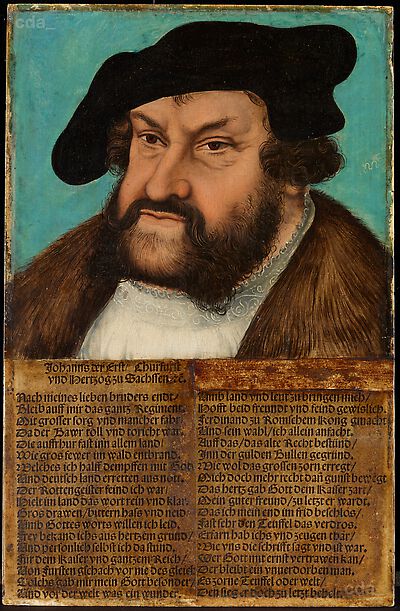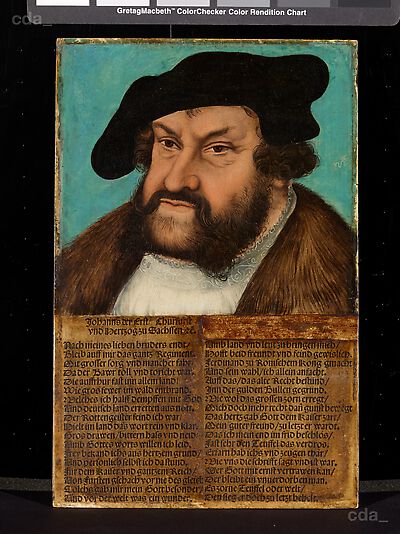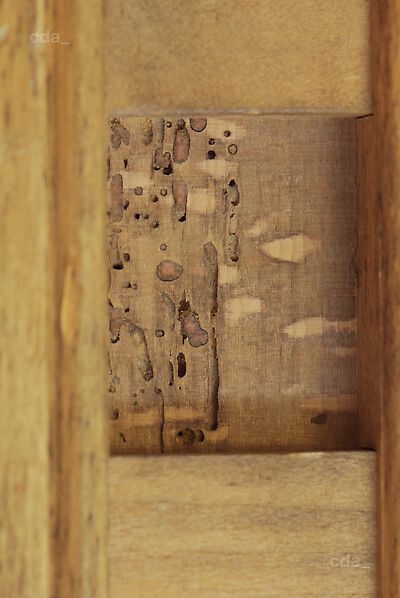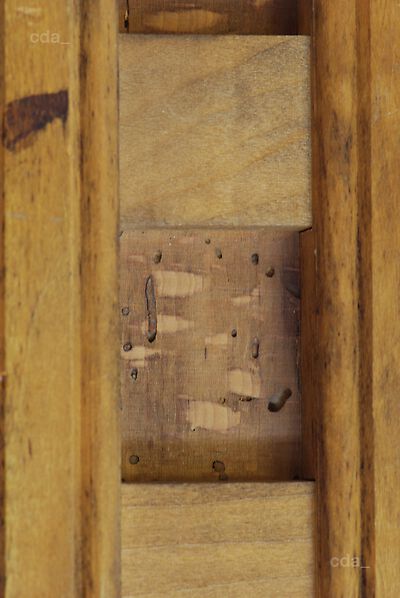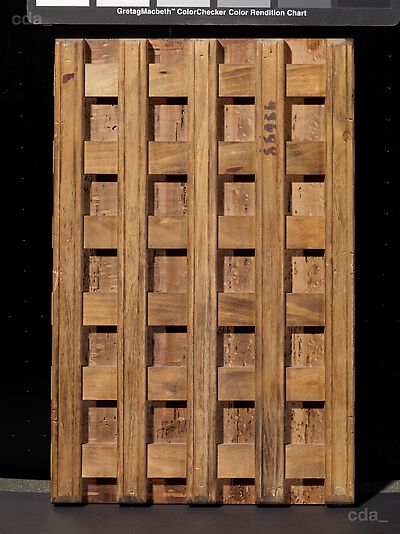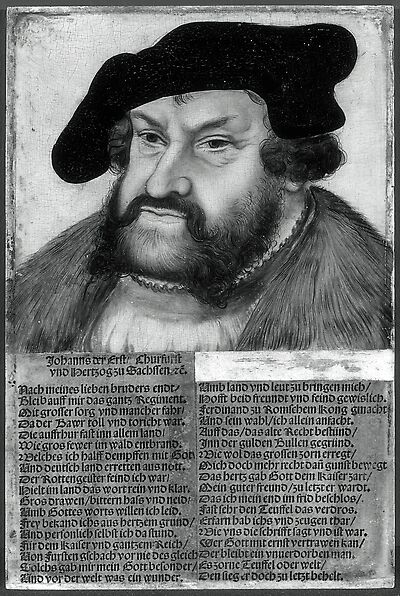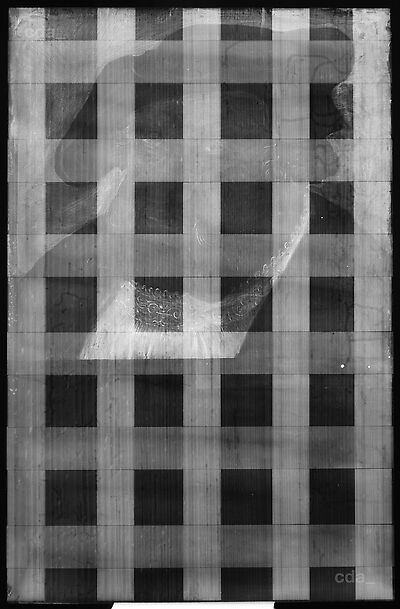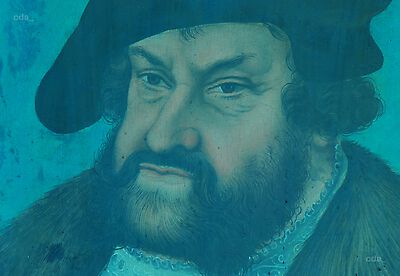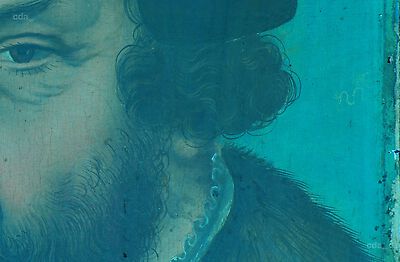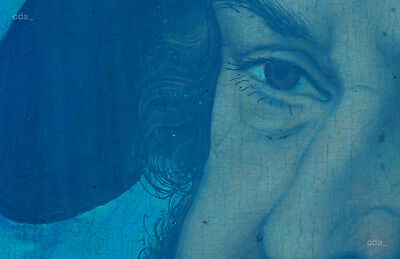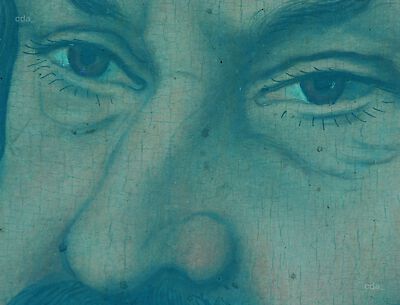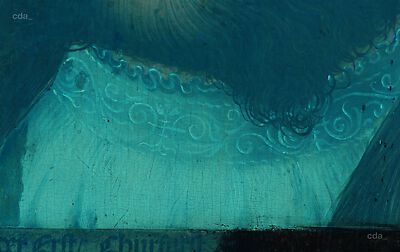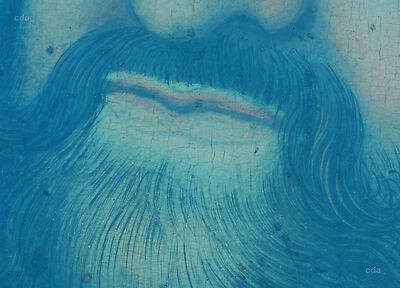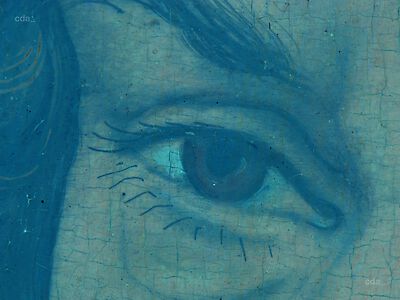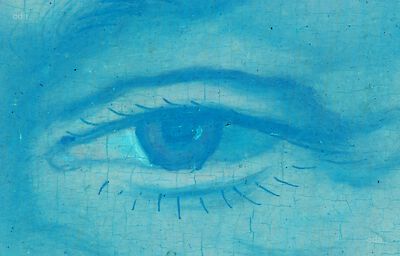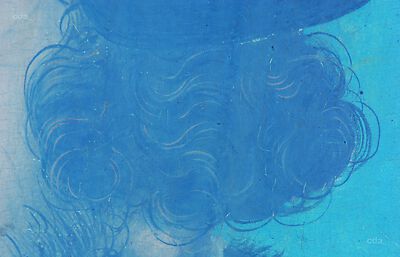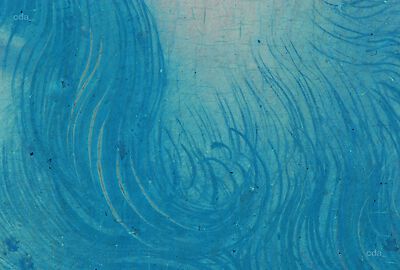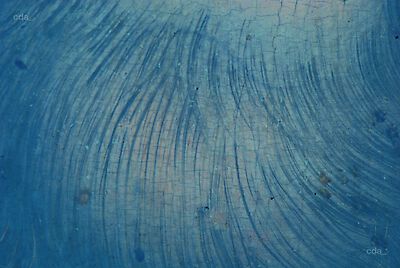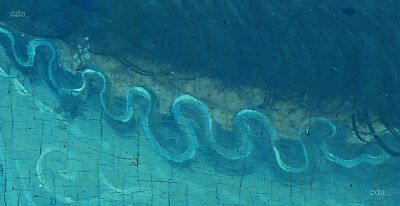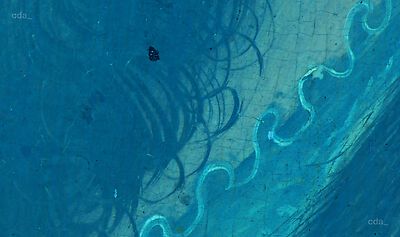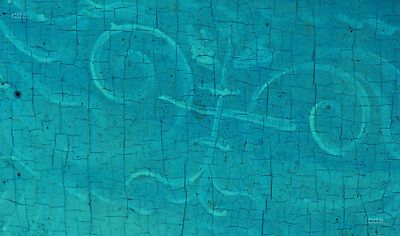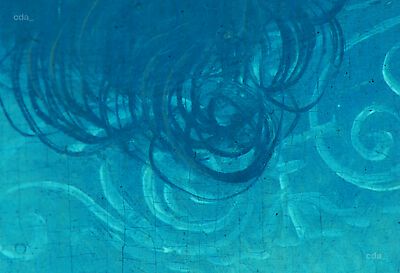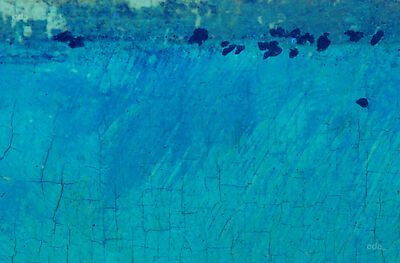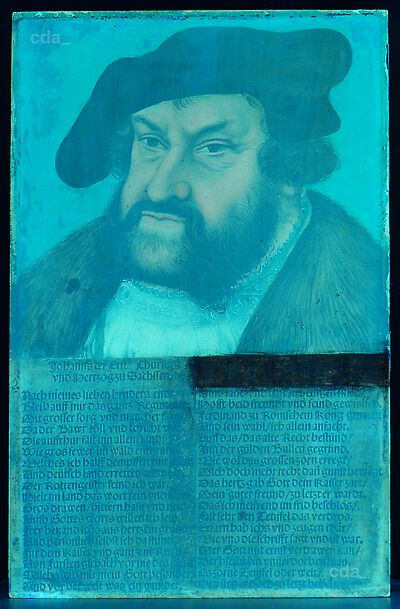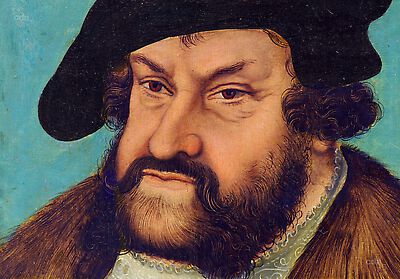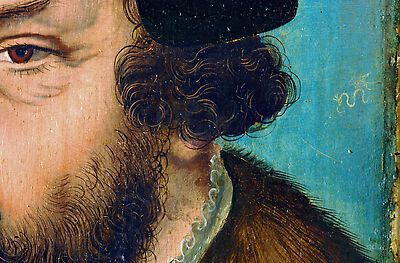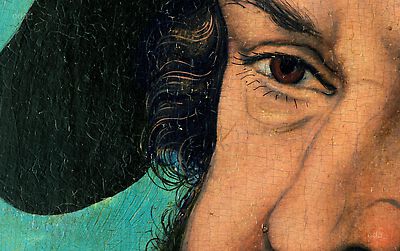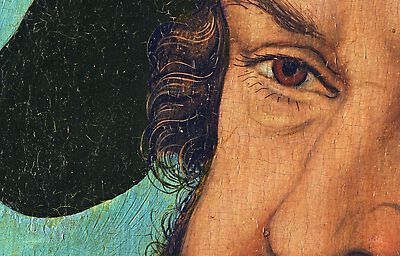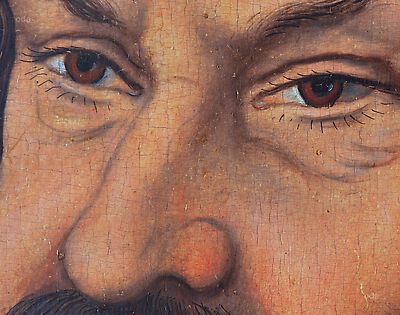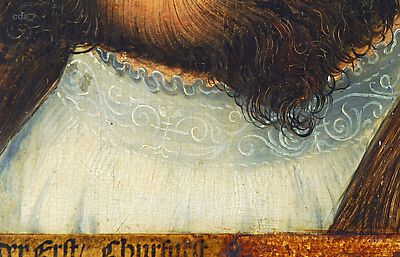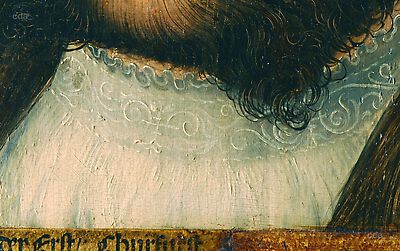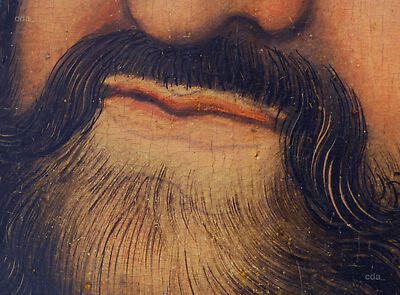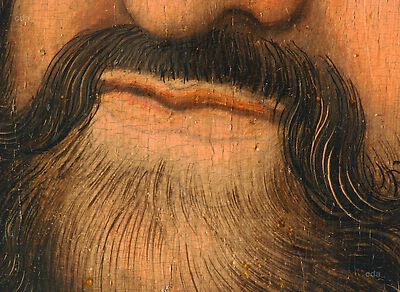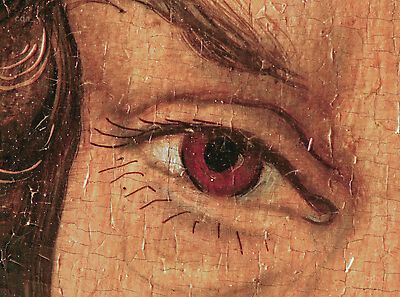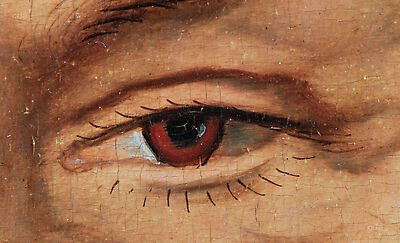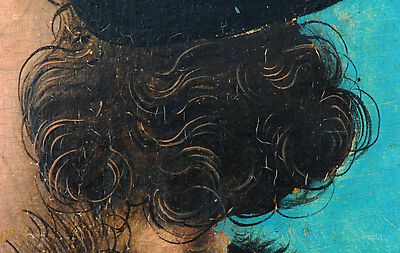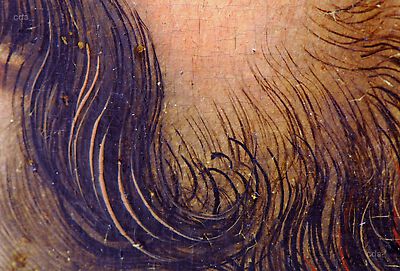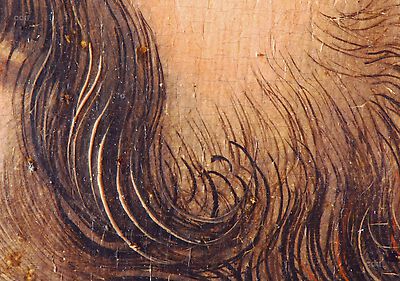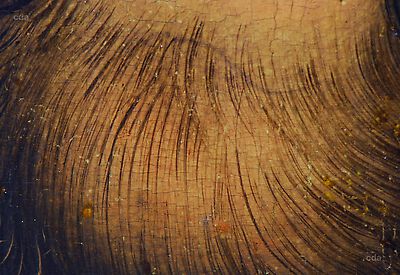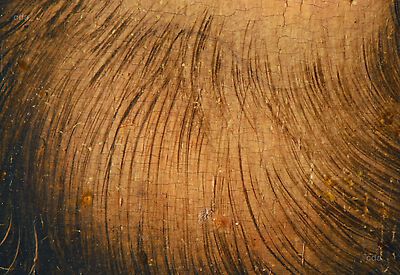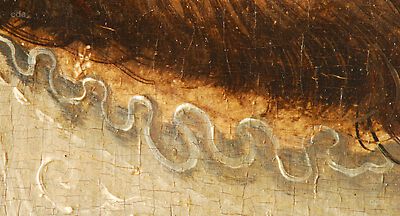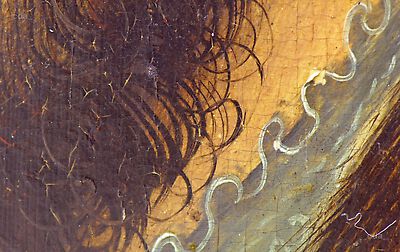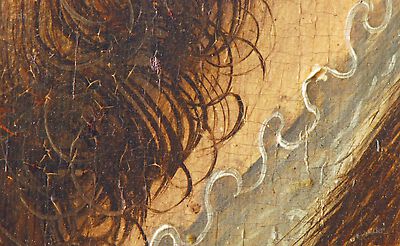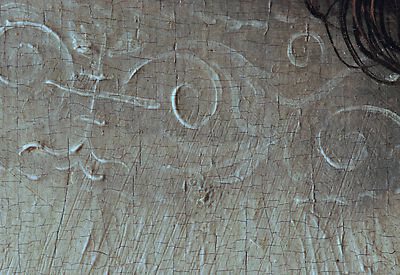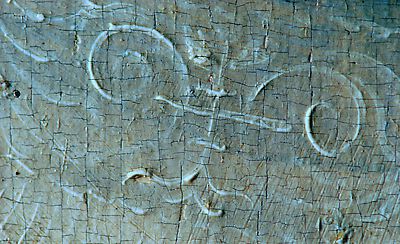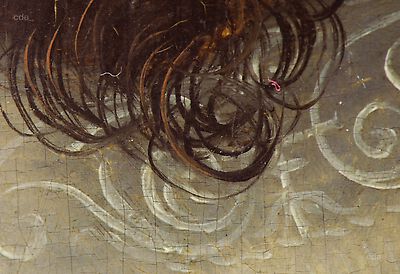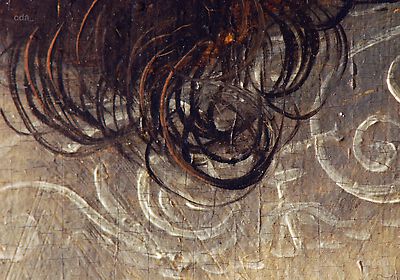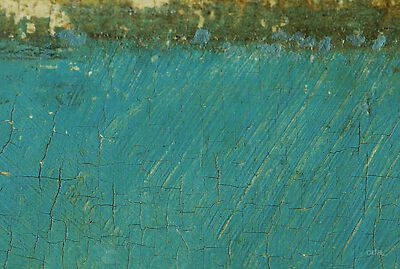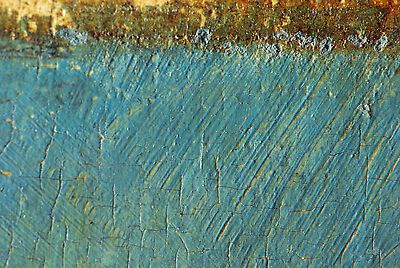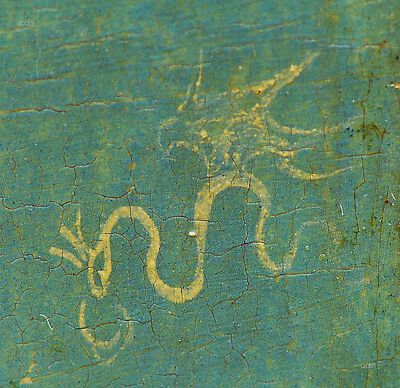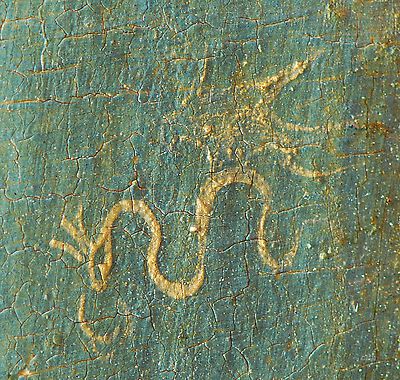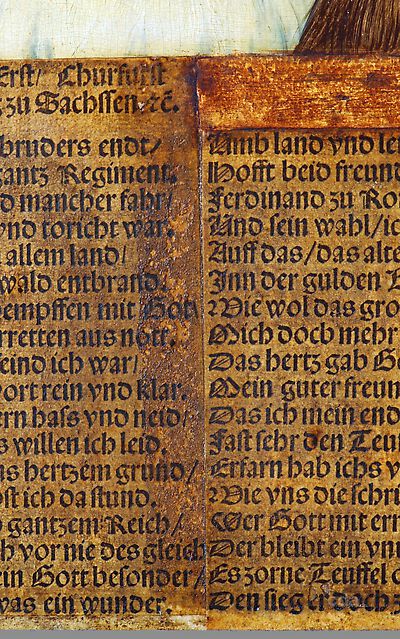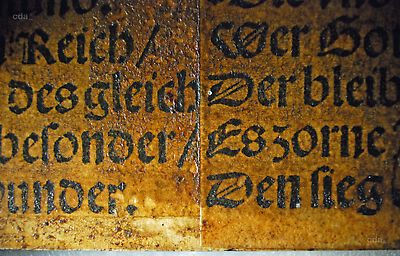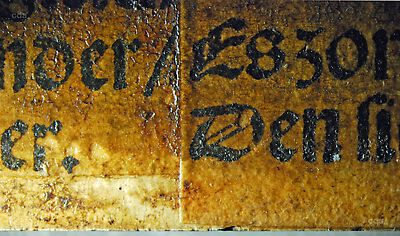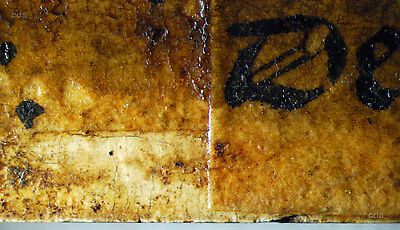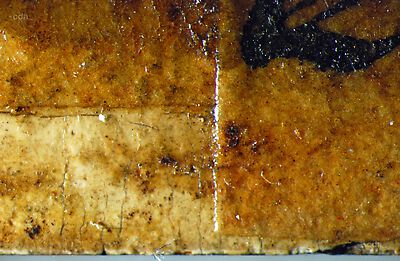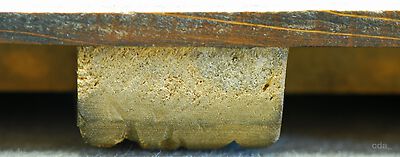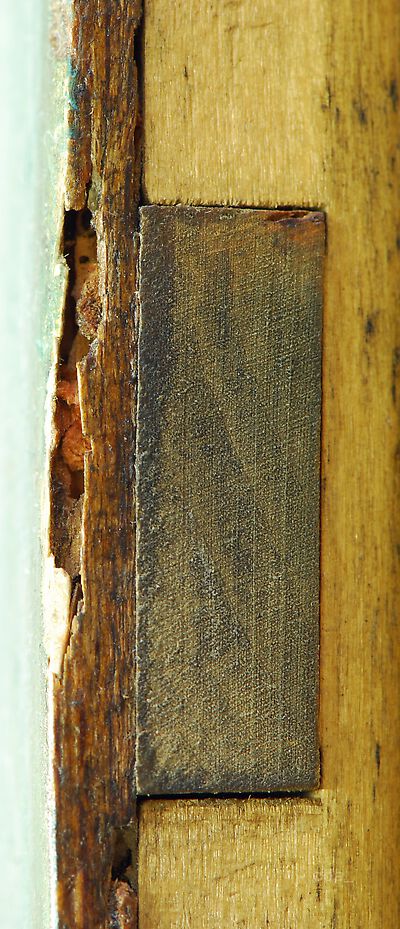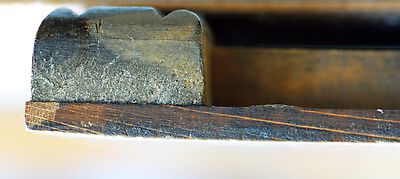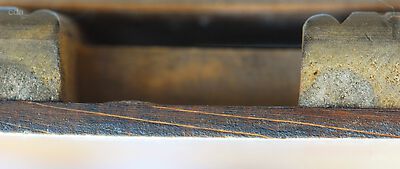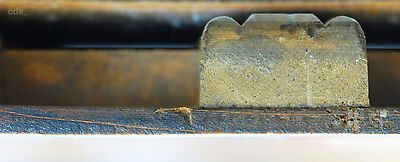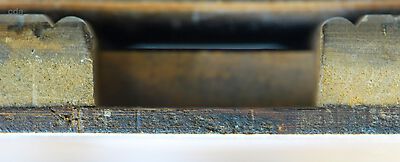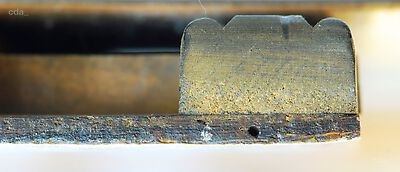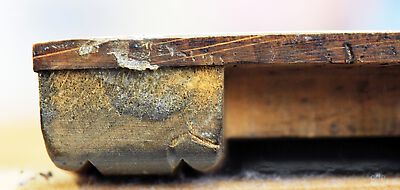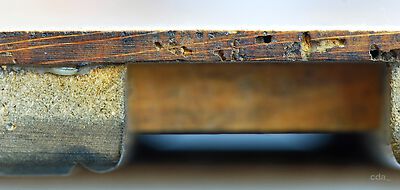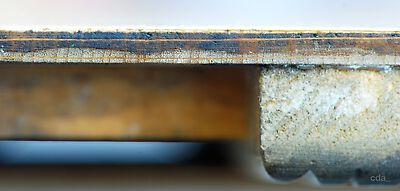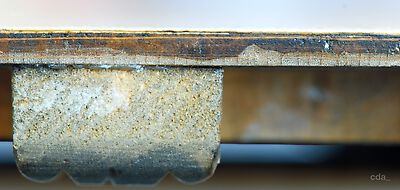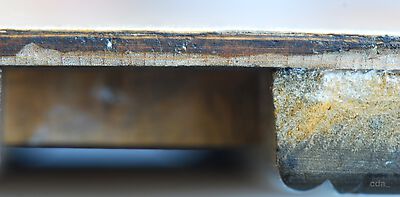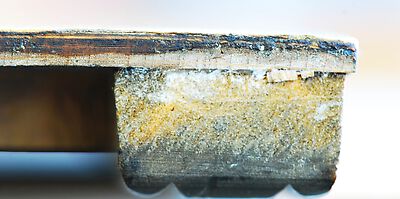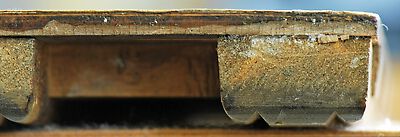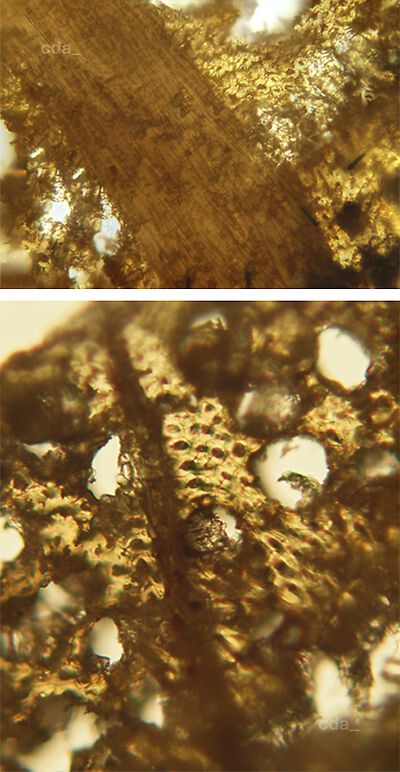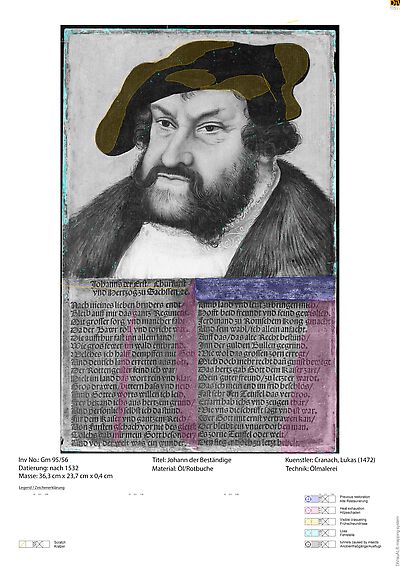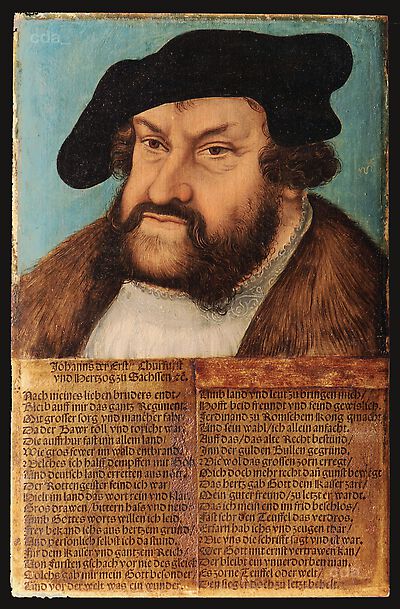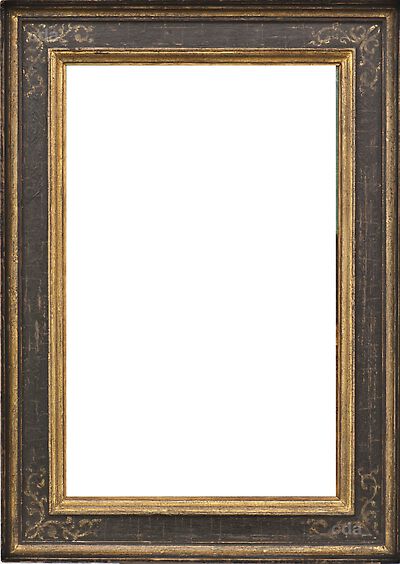Support
Beech wood
- the support is a single plank, radial cut
- the direction of the grain is vertical; the panel is trimmed on all four sides, thinned and has the following dimensions:
Plank 1: 36.0 cm x 23. 2 cm x 0.4 cm
Ground and Imprimatura
Light, white chalk ground that extends to the edge of the support. there is no barbe. Lead white detected across the entire painting using X-ray fluorescence spectroscopy suggests the presence of an imprimatura containing lead white.
Underdrawing
There is evidence for a relatively binding underdrawing that is visble as lively rogue lines and in general optically through the saponified paint layers. Close up infrared reflectographs clearly show a consentration of black for example in the lines of the mouth at the bottom or in the upper left nose line and may suggest the use of pouncing.
Paint Layers and Gilding
PIGMENTS: (X-ray fluorescence spectroscopy)
At all the points measured lead was detected (probably a lead based pigment in the ground or the imprimatura).
Red: 4, 5 (flesh paint: cheeks, lips): some vermilion, lead white
Blue: 1 (background): copper based blue pigment (probably azurite); lead white
White: 7 (shirt): lead white, some calcium present (possibly a small addition of chalk?)
Yellow: 2 (signature): lead-tin-yellow
Brown: 6 (beard): probably ochre, some vermilion
Black: 3 (hat): probably carbon black, some copper based pigment, some vermilion, high zinc content (siccative?) 8, 9 (printed text on the paper): probably carbon black
Ground: 10 (exposed white ground): lots of calcium (probably chalk ground)
The paint was applied to a white ground, which according to pigment analysis is probably a chalk based. The painted surface does not extend to the edge of the panel. A certain amount of lead white was detected employing x-ray fluorescence spectroscopy and suggests the presence of an imprimatur containing lead white. The flesh paint was executed first, then the clothes and finally the background. It overlaps the figure in many places, like the hat. In places the ground is left exposed. The paint is applied edge to edge. The background was executed rapidly in a thin, painterly application. There are also stripy impasto brushstrokes both crossways and in opposite directions. In the x-radiograph this dynamic application in different directions with a bristle brush is readily visible. The base tones were painted first, above those the shadows in a dense grey admixture. On top of this are isolated economic dark brown glazes creating shadows and linear texturing as well as single highlights. The fur and hair was applied over the glazed undertone. The brush strokes in the first layer of the fur run crossways to the texture of the fur applied on top. Clearly visible is the confident application of curved lines in the hair and fur that overlap neighbouring paint zones and are completed with highlights. The use of a fine paint brush frequently divided the stroke in two at the end. The painted areas are with the exception of the background smooth and without texture. Impasto highlights were employed for example in the shirt. In the x-radiograph it can be seen that the shirt was originally conceived slightly larger on the left side. Sections have been painted over. Also clearly visible are the highlights with a lead content and the dense application of the lighter areas with lead in the paint. The present varnish is not original.
Paper application on the lower section of the panel:
The inscription at the bottom of the panel is on paper and consists of two printed pages from a book. A section appears to be missing (original?) at the right side on the upper piece of paper.
Examination of the paper under the stereomicroscope shows the typical, unstructured, layered, woven fibre associated with high quality rag paper.
The print image is characteristic of the 16th century.
Framing
Not original frame
Profiled batten, gilded, stained dark, sgraffitto
45.6 cm x 32.5 cm x 5.5 cm (glazed)
- examined by Mathias Lang
- examined by Ulrike Hügle
